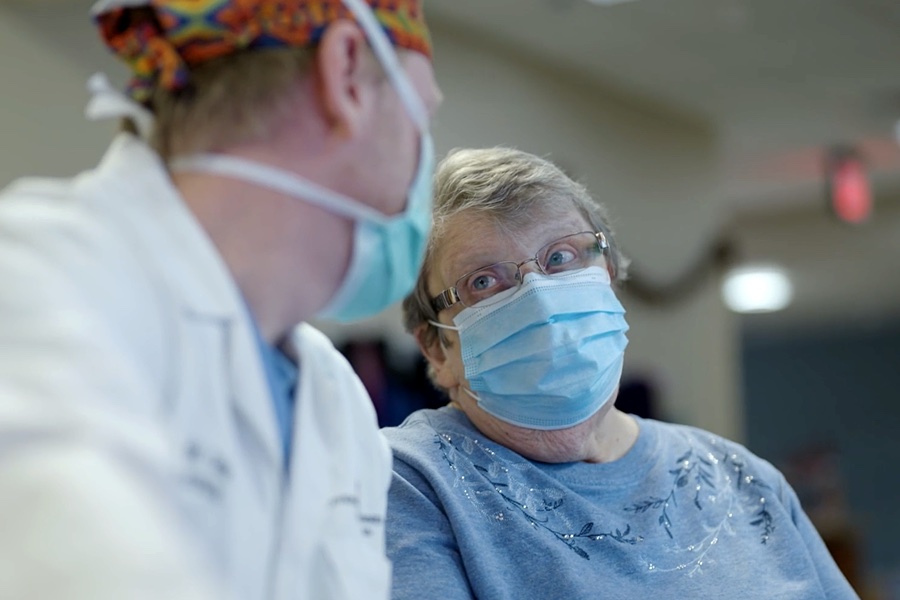
The facial pain can be as excruciating as any from a dentist’s drill. It strikes suddenly, and it can go on for seconds or hours. When it first hit Mary Lou Peterson, she could only scream in agony.
Her condition, trigeminal neuralgia, would torment the Minneapolis woman, then 57, for a decade.
Trigeminal neuralgia, or TGN, is a rare disorder of the 3-pronged trigeminal nerve, which allows our faces to sense pain, touch and temperature and to use our facial muscles. In Peterson’s case, an action as trivial as brushing her hair could trigger it.
To get through her long struggle with TGN, Peterson drew support from the Facial Pain Association, a self-help group. But for relief, she relied on Andy Grande, an M Health Fairview and University of Minnesota vascular neurosurgeon.
He knew what this unpredictable, life-altering condition could do.
“It’s horrific,” Grande says. “And to make matters worse, it often takes patients years to get an accurate diagnosis.”
“The pain essentially fills your whole person, to the point where there’s nothing outside of it,” says Jakub Tolar, dean of the U of M Medical School.
The human factor
Adding uncertainty to the ordeal, no diagnostic test for TGN exists. A diagnosis only comes from a physician listening to a patient describe their particular constellation of symptoms.
Also, TGN has no single cause that points to a single treatment. But it often happens when a blood vessel presses on the trigeminal nerve. In Peterson’s case, an MRI showed exactly that. The treatment, called a microvascular decompression, involved surgery to move the vessel creating the pressure.
But for Peterson, the treatment had to offer more than just the surgery itself. She needed courage and trust to overcome her fear of a surgical procedure.
Grande gave her that.
Peterson underwent the operation at the nationally renowned M Health Fairview University of Minnesota Medical Center, with support from its Multidisciplinary Facial Pain Clinic. When she woke from the surgery, her pain was gone. Ten years later, it has not come back.
“While there are no guarantees, when successful it’s the most rewarding population to treat,” Grande says. “You’ve just given them their life back.”
Besides providing consultation, Grande and his team research new treatments for TGN, as well as diagnostic tools for earlier intervention.
Blessing in disguise
Peterson will always wonder if the stress of losing her husband to cancer triggered the disorder. But in any case, she recognizes that the delay in getting the surgery had a silver lining.
Without it, she may never have known about the self-help group. There she found strength and hope—and opportunities to provide the same for others who came after her.
“It’s my journey,” Peterson says. “And my journey has been and will be for the rest of my life for people with facial pain to contact me if they need help because I have been there.”
- Categories:
- Health
- Health conditions
- Medical
- Treatments




